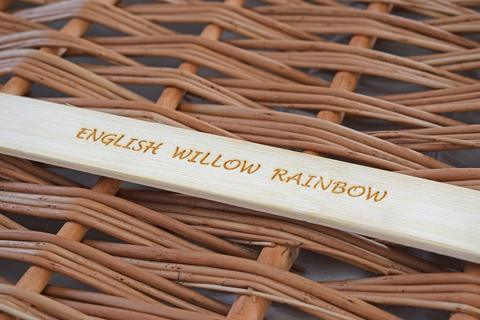
-
1. Ask your funeral director
Ask your funeral director about more sustainable options, or seek out a funeral home that offers green practices.
-
2. Don’t embalm
Few people know that embalming a body is not required by law anywhere in the United Kingdom. Consider a burial with no embalming fluid (bodies can be preserved by cooling for wakes/viewings if desired). Or look for nontoxic embalming fluid (offered by certain funeral homes).
-
3. Use a biodegradable casket
An eco-friendly casket can be made of wood (pine is a good choice), wicker, banana leaves, cardboard, or really any other renewable and biodegradable material that can support the body. Willow offers beautiful (often colourful) biodegradable Eco coffins ranging from simple to sensational.
-
4. Consider cardboard:
These coffins have the advantage of being easily decorated with art or messages, while also being affordable (yet strong enough to hold hundreds of pounds). Cardboard caskets are also 100% biodegradable, making them suitable for both burials and cremations. A cardboard coffin also produces 90% fewer carbon emissions during a cremation than a regular coffin.
-
5. Avoid a concrete vault
Avoid a concrete vault if possible (these are required by most conventional cemeteries, but not green cemeteries). Cement production is extremely energy and fossil fuel-intensive, making it a leading producer of carbon dioxide emissions contributing to climate change.
-
6. Consider local stone
If you desire a headstone, consider local stone. GPS coordinates are also a good way to mark burial location. Trees or other plantings also make meaningful markers.
-
7. Consider the management
Consider the management of the cemetery landscape. Lawns are input-intensive (water, mowing, fertilisers and pesticides), while a natural or restored landscape can provide important habitat and other ecological benefits.
-
8. Cremating
If cremating, chose a crematorium with advanced pollution controls (and if possible, remove amalgam dental fillings before cremation). Alkaline hydrolysis or “water” cremations may soon become an alternative choice to flame cremation at many crematoria across the UK.
-
9. Consider the distance
Consider the travel distance for the funeral. Everything from the choice of flowers (local or imported?) to the location of the gathering (nearby or a long drive?) can include consideration of the environmental costs and benefits. The fuel savings by avoiding cremation, for example, could be wiped out by car or air travel to a far-off cemetery.
-
10. Talk to your loved ones about it.
Perhaps most importantly, talk to your loved ones about it. If your family were suddenly left with the need to make unexpected burial arrangements, would they have the information they need to honour your wishes for green funeral or other creative alternatives to the commercial funeral home approach? If possible, make arrangements ahead of time. Grieving survivors may not think to consider the environment in making arrangements, or they may not have the time to research unconventional options. Specify your funeral wishes in your will or advance directive. Planning ahead can open up an array of choices that may reflect your preferences better than conventional options. Also, stay informed about new eco-smart options that are likely to become available in coming years--including mushroom burial suits, composting, and cryomation.
With these important considerations in mind, you can choose a path that aligns with your environmental values by creating the legacy of a healthier planet for future generations--and expresses your unique identity as well.

